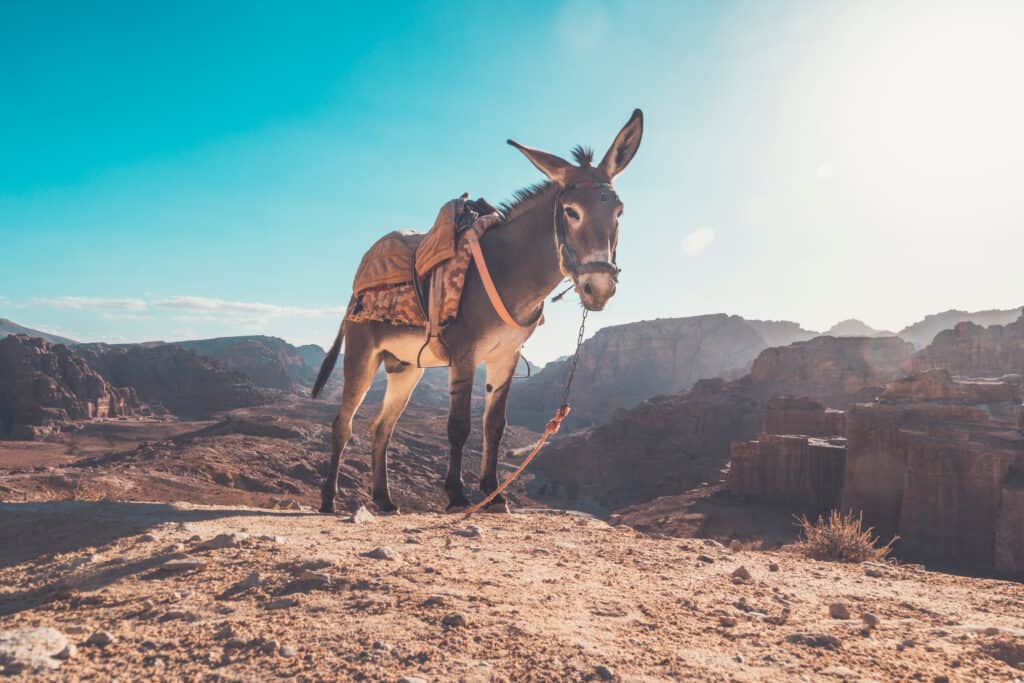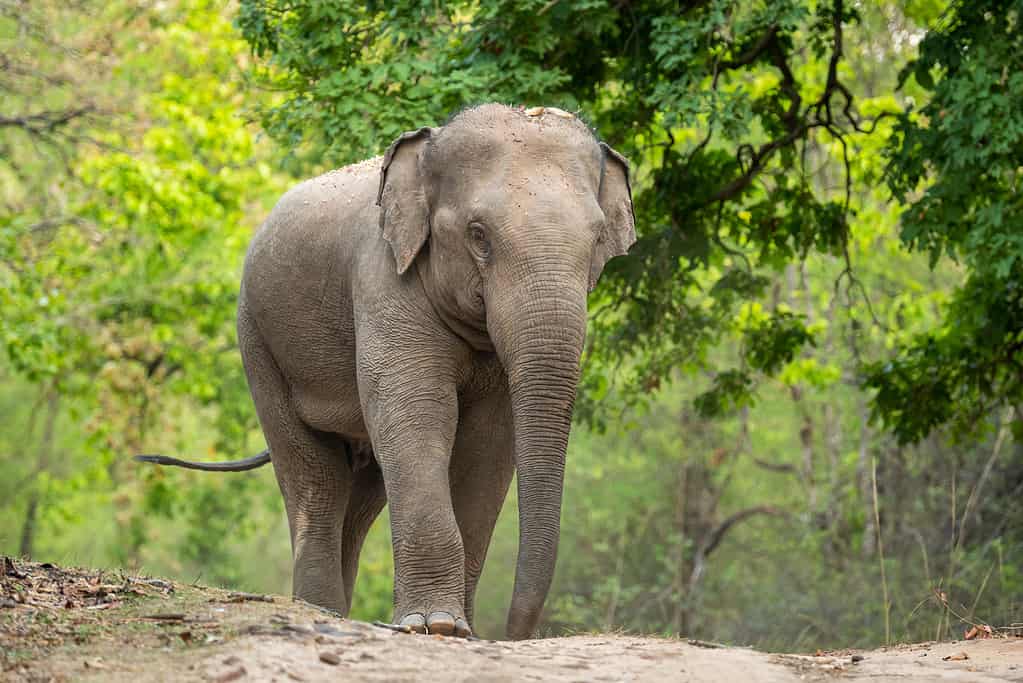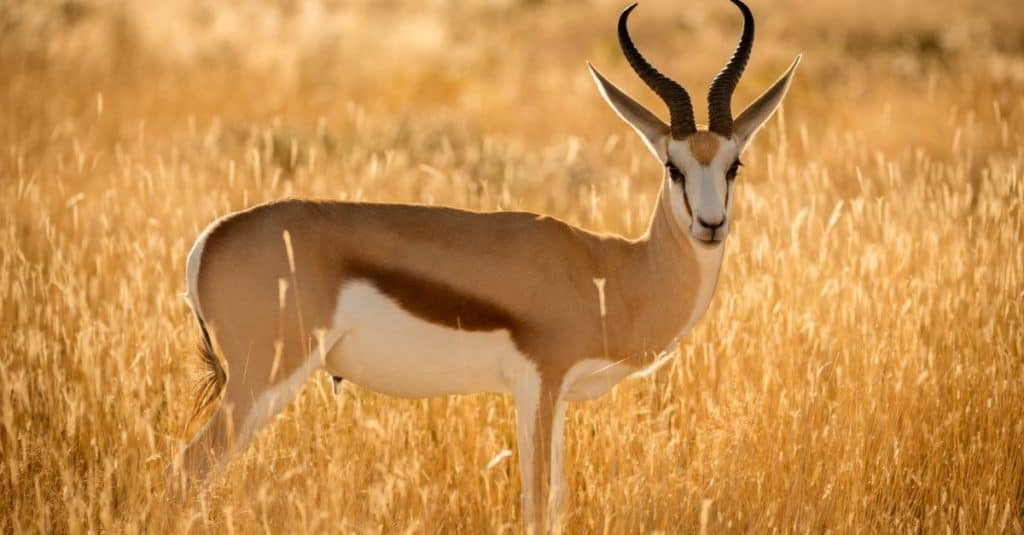
The post The Unsung Animal Heroes of World War I appeared first on A-Z Animals.
World War I earned the grim title of “the War to end all wars” for a reason: the world had never before witnessed a conflict on such an unimaginable scale. The sheer scale of the conflict felt unreal and completely unprecedented. Not only did it involve numerous nations across the globe, but it also introduced terrifying new technologies. Weapons like gas, tanks, and machine guns, alongside the brutal reality of trench warfare, inflicted catastrophic damage at an alarming level. Around 65 million soldiers fought in World War I, and over 16 million animals served served in various roles during the conflict.
These animals played crucial roles, detecting gas, controlling pests in the trenches, transporting vital supplies, and carrying messages and communications along the front lines. They also served as mascots, boosting morale for soldiers far from home. While we often focus on the human impact of the war, it’s easy to overlook the significant contributions of these animals, many of whom undeniably changed the entire course of the war.
Horses

Gas masks helped to protect soldiers and their horses from lethal gases.
©National Archives at College Park / Public domain / Wikimedia Commons – Original / License
Horses were one of the most important animals in World War I, with somewhere between five and eight million used during the conflict. Even with the advent of new technologies and military vehicles, armies heavily depended on horses to transport troops, supplies, and artillery.
Draft horses were particularly crucial for moving heavy artillery and supplies. Their unique combination of toughness, strength, and mobility made them ideal for navigating challenging terrains. On the Eastern Front, German and Russian forces favored smaller but more resilient native breeds like the Panje horses due to their ability to withstand harsh cold and limited food supplies.
While not all nations prioritized the well-being of their horses, some organizations and countries made considerable efforts. The American Red Star Animal Relief educated American soldiers on equine first aid and provided medical supplies for the animals. Great Britain also took good care of its military horses, having learned from past mistakes during the Boer War. They even extended their veterinary services to France.
Horses from all corners of Europe, from grand estates to rural farms, were pressed into service during the war. Beyond their practical contributions, they also provided companionship and moral support to soldiers, a bond famously depicted in films like War Horse. The real-life inspiration for that film, Warrior, arrived in France in 1914 with his owner, Jack Seely. They bravely served together throughout the war in the British Expeditionary Force, even leading a cavalry charge. Miraculously, both survived the conflict and returned home, living together for another two decades.
Donkeys and Mules

Donkeys were essential in hot climates and mountainous areas.
©diy13/Shutterstock.com
As sure-footed pack animals that thrive in hot climates, donkeys and mules played a vital role in World War I. They were particularly valuable in mountainous regions like Italy, Sinai, and Palestine. At Gallipoli, donkeys were especially indispensable. They tirelessly hauled supplies up steep hillsides and even served as “walking ambulances.” A notable example is Private John “Jack” Simpson, who used donkeys to transport medical supplies to the trenches and carry wounded soldiers back down to the beach for treatment.
In 1916, the Italians employed mules at Salonika because they were considerably more resilient than traditional horses. As hybrids, mules are less susceptible to injury and sickness and require less food, even when working tirelessly through the day. During one intense Austrian attack, for example, 20 mules from a single battalion worked 18 hours a day for eight consecutive days! The mules hauled vital supplies like rolls of wire, fence posts, water, and rations. The Alpini mountain troops developed an especially deep bond with these animals, viewing them not just as tools but as loyal comrades and a tangible link to home during the war. Being smaller than horses, donkeys, and mules could also occasionally maneuver in the trenches, particularly on the Western Front. They were far better at navigating and traveling through the wet mud as well, and could expertly traverse narrow paths right up to the front lines and climb steep, rocky cliffs.
Dogs

Red Cross dogs carried small packs with medical supplies to assist injured soldiers.
©George Grantham Bain Collection / Public domain / Wikimedia Commons – Original / License
During World War I, dogs served in many vital roles, including as guards, sentries, messengers, and companions. They navigated treacherous trenches and around craters left by shells and bombs, carrying messages attached to their collars. Various regiments also adopted dogs as mascots, dramatically boosting the soldiers’ morale.
Large breeds like Belgian mastiffs pulled machine gun carts, while Maremma dogs pulled sleds for Alpini troops in icy and snowy conditions. The French employed “ambulance dogs” to locate wounded men. The dogs’ keen senses made them fantastic sentries, especially at night when human visibility was limited. Germany extensively used dogs as messengers, with 6,000 trained service dogs at the beginning of the war to carry messages and lay telephone cables. Later in 1917, Lieutenant Colonel Edwin Hautenville Richarson established the British War Dog School, training Airedale, collie, Irish, and Welsh terriers to carry messages across shell-torn terrain and battlefields.
Smaller dogs also contributed by serving as rat catchers in the trenches, and many were adopted as mascots and cherished companions. For example, a canine mascot named Rags quickly learned to deliver messages, detect incoming shells, and identify broken communication lines. Sergeant Stubby, a Staffordshire terrier mix, became the beloved mascot of the 102nd Infantry, 26th Yankee Division. Stubby offered companionship and a comforting sense of home to the soldiers. He also learned to detect gas and locate wounded soldiers. He even apprehended a German spy.
Pigeons

Tens of thousands of homing pigeons were used during the war.
©Dreamer Company/iStock via Getty Images
Homing pigeons were indispensable during World War I for sending messages. Those used by American and European forces reported an impressive success rate of about 95 percent. Their importance was so profound that the British Defense of the Realm Act made it illegal to harm these birds in any way. One of the most famous pigeons was Cher Ami, who served in the U.S. Army Signal Corps in France. During this twelfth message delivery on October 4, 1918, Cher Ami was shot through the leg and breast by enemy fire. Despite his severe injuries, the bird continued on, delivering his vital message and ultimately saving nearly 200 lives. The message he carried was absolutely critical: it came from the U.S. Army’s 77th Infantry Division, which was accidentally being fired upon by their own troops! Thanks to Cher Ami’s heroic delivery, the friendly fire ceased immediately, and the trapped battalion was rescued.
Canaries

Canaries display discomfort and other symptoms of toxic gases before humans.
©Afonso Farias/iStock via Getty Images
Pigeons weren’t the only birds that played a life-saving role for soldiers during World War I. Canaries were also invaluable, especially in underground tunnels and trenches. They are extremely sensitive to gas, about 20 times more than humans are. These small birds would alert soldiers to the presence of dangerous gases long before humans could detect them or experience any symptoms.
Slugs

The “Slug Brigade” of World War I helped to save countless lives.
©Marija Stepanovic/Shutterstock.com
Believe it or not, slugs saved many lives during World War I! Similar to canaries, slugs have an incredible ability to detect the presence of mustard gas long before humans can. When slugs encounter mustard gas, they close their breathing pores and compress their bodies. This distinctive reaction served as an early warning system, alerting soldiers to quickly put on their gas masks and protect themselves.
Cats

Togo was a Persian cat.
©Nynke van Holten/Shutterstock.com
Due to their small size and natural instinct to hunt vermin, cats quickly became a valuable asset aboard naval ships and within the trenches during World War I. Many of these felines were displaced by the conflict and adopted by soldiers who provided them with food and shelter. In return, the cats served as mascots, companions, and amazing rat catchers. For example, Togo, a cat aboard the HMS Dreadnought, became the crew’s mascot, offering companionship and amusement, often found napping in the barrels of the ship’s main battery.
Camels

The Camel Corps was invaluable in the Allied victory in the Battle of Beersheba.
©American Colony Jerusalem / Public domain / Wikimedia Commons – Original / License
Camels were another important animal that proved to be extremely valuable in desert campaigns during World War I. A camel corps had actually been established in France in 1912, primarily for use in the Sahara Desert Region. During the war, the British Army formed the Egyptian Camel Transport Corps to move crucial supplies to Sinai, Palestine, and Syria. Later, in 1916, the British also created the Imperial Camel Corps for long-range patrols around the Suez Canal and in the Sinai Desert. Tragically, estimates suggest that over 100,000 camels died during WWI. Beyond their military service, camels also assisted on the home front. Many camels from zoos and circuses stepped in to replace the horses that had been conscripted for war service.
Elephants

Many elephants served in public areas in Great Britain, Germany, and Belgium during the war.
©Sourabh Bharti/iStock via Getty Images
As countless horses, both military and privately owned, were conscripted and sent to war across Europe, farmers back home were left without assistance for heavy labor. Surprisingly, in many areas, they found an unusual solution: recruiting camels and elephants from zoos and circuses to help in fields and pull carts.
A particularly charming example is Lizzie, an elephant leased by Thomas Ward from William Sedwick’s Traveling Menagerie. During World War I, Lizzie became a regular sight in Sheffield, South Yorkshire, where she pulled carts loaded with munitions, machinery, and scrap metal. They even crafted custom leather boots for her to protect her feet from the sharp metal. People grew fond of Lizzie and often fed her treats as she went about her work. However, if treats weren’t readily offered, Lizzie often helped herself, slipping her trunk through open windows to snatch a snack.
Baboons

Jackie was injured several times during the war and lost his leg.
©Unknown author / Public Domain / Wikimedia Commons – Original / License
While cats and dogs commonly served as mascots during World War I, some units had more exotic animals, such as Jackie the Baboon. When Jackie’s owner left for the war, he brought Jackie along with him, and the baboon became the mascot of the 3rd South African Infantry Brigade. Jackie helped boost morale among the soldiers and even warned them of enemy attacks. He became such an important part of the group that he wore his own uniform and marched alongside his fellow soldiers.
Antelope

Nancy was a fitting mascot for the South African Brigade, which was also known as the “Springboks.”
©Udo Kieslich/Shutterstock.com
Another unusual animal in World War I was Nancy the springbok, the antelope mascot of the 4th Regiment of the South African Forces. Nancy had been a family pet whose owners volunteered her for the war, hoping to help preserve memories of South Africa for the troops. Private A. E. Peterson trained her, and she learned to walk in parades in an orderly fashion at the front of the pipe band, easily charming both the military and public.
While the regiment was in the village of Sailly-le-Sac, an explosion startled Nancy, and she bolted, breaking her horn against a wall. After this incident, her horn grew permanently downwards. She attended her last parade in February 1918. Sadly, Nancy caught pneumonia later that year and died in November 1918. The regiment held a funeral in her honor, with Peterson playing the bugle.
Bears

Winnie was an incredibly tame bear and would follow Colebourn on his rounds like a loyal puppy.
©#N10467 / Public domain / Wikimedia Commons – Original / License
In August 1914, Lieutenant Harry Colebourn stepped off a train in Ontario and encountered a young, seven-month-old black bear cub for sale. Colebourn, a veterinary surgeon, purchased the cub for $20 and brought her to his training camp in Valcartier. In honor of his hometown, he named the little cub “Winnipeg” or “Winnie” for short. Winnie remained with Colebourn throughout his training, sleeping under his cot at night and following him around the grounds, eventually becoming the regiment’s mascot. She even accompanied him to Salisbury Plain in England for his next training phase.
However, when Colebourn was called to the front lines, he wisely decided the trenches were no place for his beloved furry friend. So, in December 1914, he took young Winnie to the London Zoo. Colebourn continued to visit Winnie whenever he had leave from the front, and she remained the sweet, gentle bear she had always been. The zoo even allowed children into her enclosure to feed her. Although he initially wanted to bring Winnie home after the war, Colebourn ultimately decided that the bear belonged to the people of London and she was no longer his personal pet. If the name “Winnie” sounds familiar, you’re on the right track! Winnie was, in fact, the inspiration behind A.A. Milne’s classic tales of Winnie the Pooh. Milne’s son, Christopher Robin Milne, adored visiting the bear at the zoo and feeding it condensed milk.
Lions

Whiskey and Soda were loved among the squadron and were mostly free to go wherever they pleased.
©USAF / Public domain / Wikimedia Commons – Original / License
Military mascots come in all shapes and sizes, but it’s pretty hard to imagine having not just one, but two lions while training on a military base! Yet this was the reality for the pilots of the Lafayette Escadrille. They purchased a lion in Paris, naming him “Whiskey,” and somehow managed to bring him back to the Escadrille base. Not long after, they decided they needed a second lion, whom they named “Soda.” The two lions were quite beloved by the pilots at the Escadrille base. However, their antics eventually led to one lion eating the captain’s hat. Consequently, Whiskey and Soda were quickly donated to the Paris Zoo.
The post The Unsung Animal Heroes of World War I appeared first on A-Z Animals.
June 06, 2025 at 06:02PMKellianne Matthews
.jpeg)
.jpeg)

0 Comments